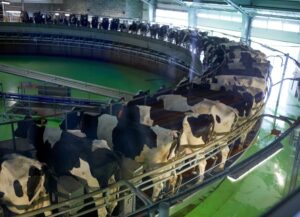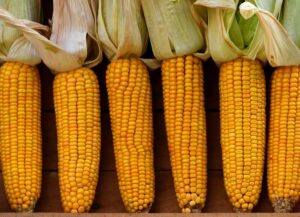Lucas Pantaleon
The installation of automatic milking systems (AMS) is becoming more common around the world, as well as larger herd sizes. Risk factors for mastitis in farms using AMS may be different from farms using conventional milking systems (CMS). The reason behind this difference is the different management practices between CMS and AMS. On AMS farms mastitis detection is based on screening with sensors, whilst at CMS detection is done cow side during milking. Another dissimilarity is that udder preparation in AMS farm is done automatically, that is the process is always carried out with the same intensity.
Mastitis in dairy cattle is a multifactorial disease, influencing factors could be grouped in 3 categories: factors related to (1) pathogen exposure, (2) host resistance to infection, and (3) cure of infection. In farms using CMS some of the risk factors linked to pathogen exposure are related to hygiene of cow, milking machine and housing, and post-milking teat disinfection. Risk factors due to host resistance are related to breed, production level and nutrition. Factors related to cure of infection are cow, pathogen and treatment-associated factors.
Due to the management differences between systems, the objective of a study conducted by Dutch researchers was to identify farm level factors associated with udder health in AMS farms. Risk factors from 135 AMS Dutch farms were collected using data from 2008, combined with on-farm recording of cow, stall and AMS hygiene. These risk factor data were linked to 4 udder-health-associated dependent variables: average herd somatic cell count (HeSCCav), variance of the average herd somatic cell count on test days (HeSCCvar), the average proportion of new high somatic cell count cases (NHiSCC), and the farmer-reported annual incidence rate of clinical mastitis (IRCM).
This study found that cow and AMS hygiene are important and that udder health may be a more important factor in large farms milking with AMS. In this study the 3 SCC based udder-health-associated variables were significantly associated with each other but lacked association with IRCM. Furthermore, cow hygiene (cleaner teats and less cows laying outside cubicles) yielded lower HeSCCav and good AMS hygiene was associated with lower HeSCCav and less NHiSCC. Hygiene of AMS was positively associated with cow hygiene. Effective intervention from part of the farmer to maintain good hygiene included manure removal, appropriate number of cubicles per number of cows and effective AMS cleaning.
In addition, appropriate post-milking teat disinfection yielded lower NHiSCC, it has been shown that there is a strong effect of post-milking teat disinfection on the transmission of mastitis pathogens. Therefore, AMS farms must emphasize appropriate post-milking spraying as a measure to prevent mastitis.
Farms participating in health disease programs revealed improved udder health, the likely explanation for this reduction in total disease burden on farms participating in such programs.
Negative attitude from the farmer towards animal health, increased frequency of checking AMS and longer time viewing computer data, all were positively correlated with elevated IRCM. Some of these findings could be explained by the fact that farms that showed a higher IRCM are managed by farmers that had more accuracy in the diagnosis and recording of clinical mastitis cases. Hence farmers with a stronger motivation for bettering udder health could report a higher IRCM.
A larger herd size was correlated with lower HeSCCvar but higher NHiSCC. In large farms, transitory changes in somatic cell count may go unnoticed due to the large herd size, thus the lower HeSCCvar. In large herds, famers could have limited time to implement individual udder prevention measures, leading to more frequent infections, thus higher NHiSCC.
As stated above there is a trend globally for increasing dairy herd sizes. An important finding of this study was the fact that larger AMS farms are at a higher risk than smaller AMS farms for the development of abnormal udder health. Hence the dynamics of udder health in large dairies needs to be studied more in depth in order to develop specific measures for countering this problem.
Reference:
Deng, G. Koop, T. J. G. M. Lam, I. A. van der Lans, J. C. M. Vernooij, and H. Hogeveen. 2019. Farm-level risk factors for bovine mastitis in Dutch automatic milking dairy herds. J. Dairy Sci. 102:11308–11316.
© 2020 Dairy Knowledge Center, LLC. All Rights Reserved.









